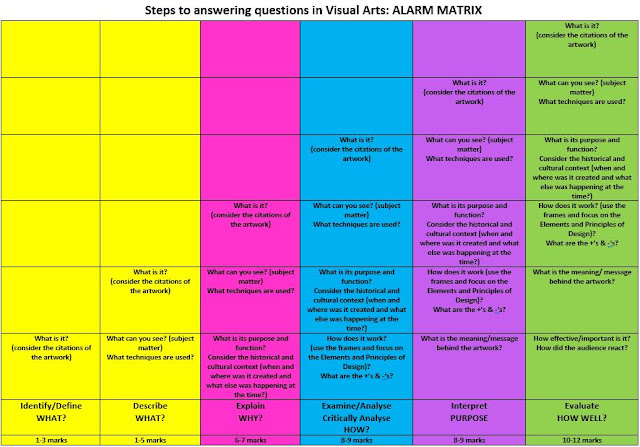Art Critique
I have been marking like crazy and sometimes wish the papers could grade themselves BUT I am happy about being proactive this holidays instead of lazing around like a sloth. If I don't use my time wisely, I am likely to have a heart attack. Yesterday, I finished marking another set of Year 7 Case Studies (essays). I still have to cross it off my To-Do List. I have one more set of Year 7 Case Studies to mark then a handful of Year 11 piles to KO.
In between marking, I have been looking up ideas to teach 'Art Critique'. I am excited to try the following ideas out:
I found this valuable FREE resource on Pinterest created by the 'Expressive Monkey' company. It is also on Teachers Pay Teachers. I swear Pinterest is my best friend. I always recommend Pinterest to my students when they are stuck on ideas. Anyways, this 'Ping Pong' resource can be made using real ping pong balls or it can be printed out and laminated (if you want to prolong its life). I actually went in stores to purchase real ping pongs but after finding out there are only 6 in a packet (from Daiso -Japanese $2.80 store), I decided that printing will be cheaper. It also lowers the chances of classroom disruptions. I can imagine a few students wanting to throw ping pong balls across the room.
I am also keen on trying this out:
This is the description of the video from 'The Art of Education' website:
This might sound crazy, but there are art history writing assignments that kids will actually have fun doing! This video highlights one of my favorites called “Blind Date.” It can be used with any two portraits and can serve as a great introduction to an artist, to portraiture, or even just to writing about art. No, we don’t go over the elements and principles of art and we don’t describe/analyze/interpret/judge, but we do something even better: we think critically and creatively, and have fun while we do it. Check it out.
For more ideas check out the different ways to teach 'Art Criticism' via 'Art 407 - Art Practicum' blog:







Comments
Post a Comment